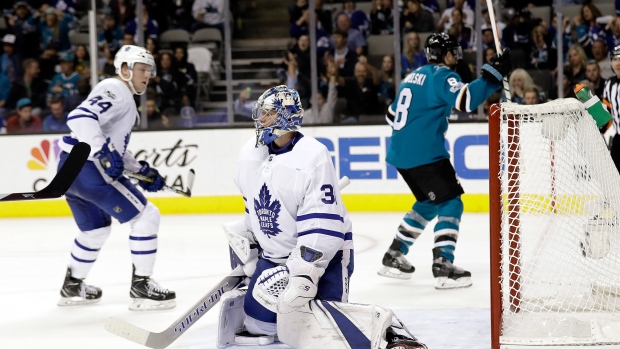Nov 6, 2017
Leafs have been bad and unlucky in defensive third
Every shot in a Maple Leafs game seems like it has a very real chance of finding the back of the net, regardless of which team takes it, Travis Yost writes.
By Travis Yost

They have the second-best offence in the NHL and the fifth-worst defence.
It’s been that kind of a season so far for the Toronto Maple Leafs, a team that’s working on redefining high-event hockey. Every shot in a Leafs game seems like it has a very real chance of finding the back of the net, regardless of which team takes it. While it has been incredibly fun to watch, it has to be driving the coaching staff mad.
The Leafs are still in a decent spot in the standings thanks to a relentless attacking group across four lines, but the defensive third is the reason why a team that can’t be stopped offensively is just 8-7-0 after 15 games. To the Leafs’ credit, they’ve recognized this as a weak area for some time – they’ve been in the trade market for a top-four defenceman for some time, and have tried mixing/matching their pairs since last season.
Goaltender Frederik Andersen’s struggles out of the gate are compounding the issue. Andersen has stopped less than 90 per cent of the shots (.895 save percentage) he’s faced in 13 games. I think it’s reasonable to expect a rebound from him, but when your defence is a weak point and your goaltending is struggling, it’s usually a recipe for disaster. Add all that together, and you have a team giving up 3.6 goals a night.
Toronto’s start got me curious about whether other teams who’ve had similar goals-against issues were ever able to get them under control. Though scoring is up in 2017, for the most part teams have averaged around 2.7 goals per game and have scored on about 7.8 per cent of shots. That allows us to compare this Leafs squad to pretty much any team in a similar situation since the 2007-08 season.
I went back and looked at every team’s goals-against rate through the first 15 games of the season, and then focused on a subset of those teams – the teams who were truly abysmal in the opening stretch at preventing goals.
To me, this is the encouraging part if you are Mike Babcock – a coach who is surely losing sleep over his team’s goals-against numbers out of the gate. We’ve been here before – these 21 teams since 2007-08 bled goals mercilessly in the first 15 games of the season. These teams substantially regressed (in a positive manner) over the remainder of the regular season, though it’s worth noting that the majority still gave up more goals than your average hockey team. Every single team saw their goals-against numbers drop, and a couple of those teams managed to shave off more than a full goal per game.
I think this suggests more about how unlucky the Leafs have been defensively than anything else. That’s true even if you agree that the defence will remain the team’s weak point and that the goaltending, while not a strength, is undoubtedly better than it has shown.
I think you can make the reverse argument about their offence and the fact that they have beaten opposing goaltenders at just a ridiculous rate – again, 3.8 goals for per game on nearly 12 per cent shooting is equally ridiculous and probably unsustainable.
So, the Leafs still don’t appear to be a great defensive team – nor were many of the teams from our table above. But it’s exceedingly unlikely they’re as bad as they’ve appeared. The question about how the Leafs improve defensively is real and important – I suspect that at some point, the Leafs will flip one of their talented forwards for a top-four defender. The issue can’t be ignored for much longer.
But 3.6 goals against per game? That just won’t last. We know this because every other team who has lived this first-month nightmare has seen their fortune turn in the right direction.

